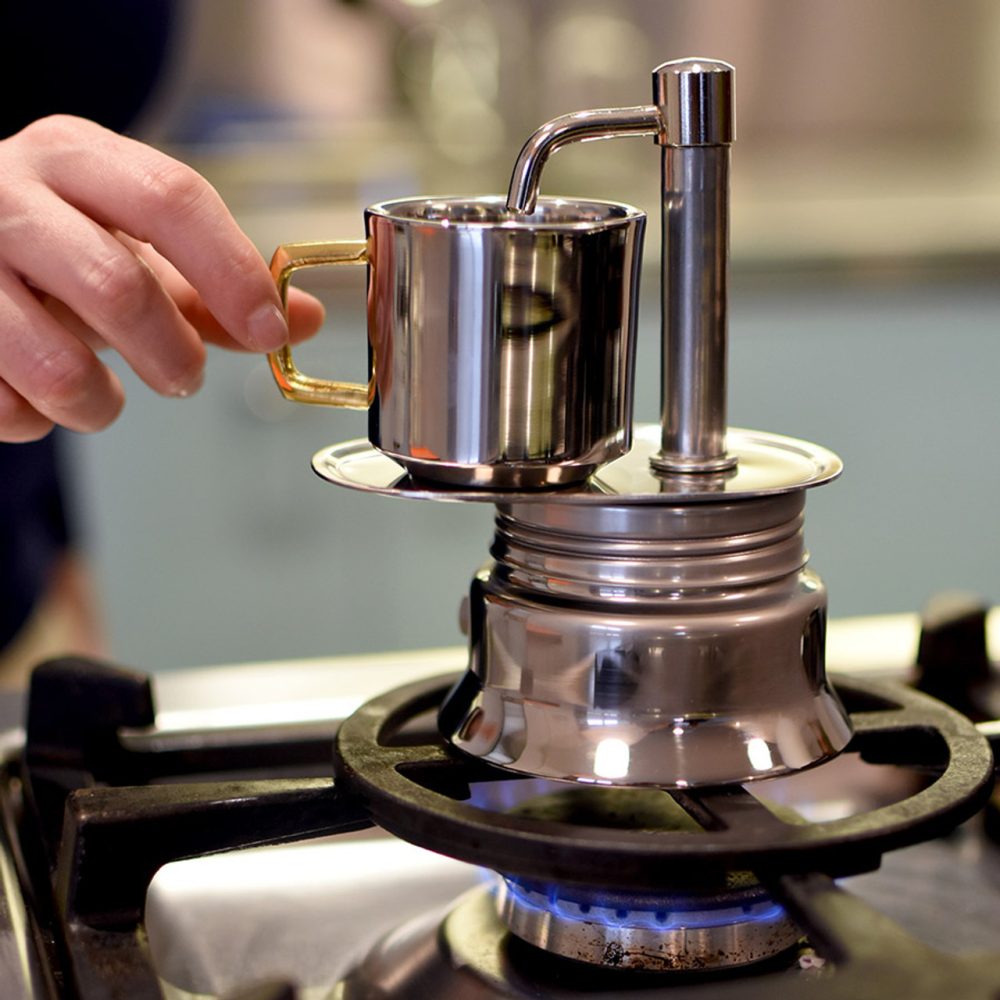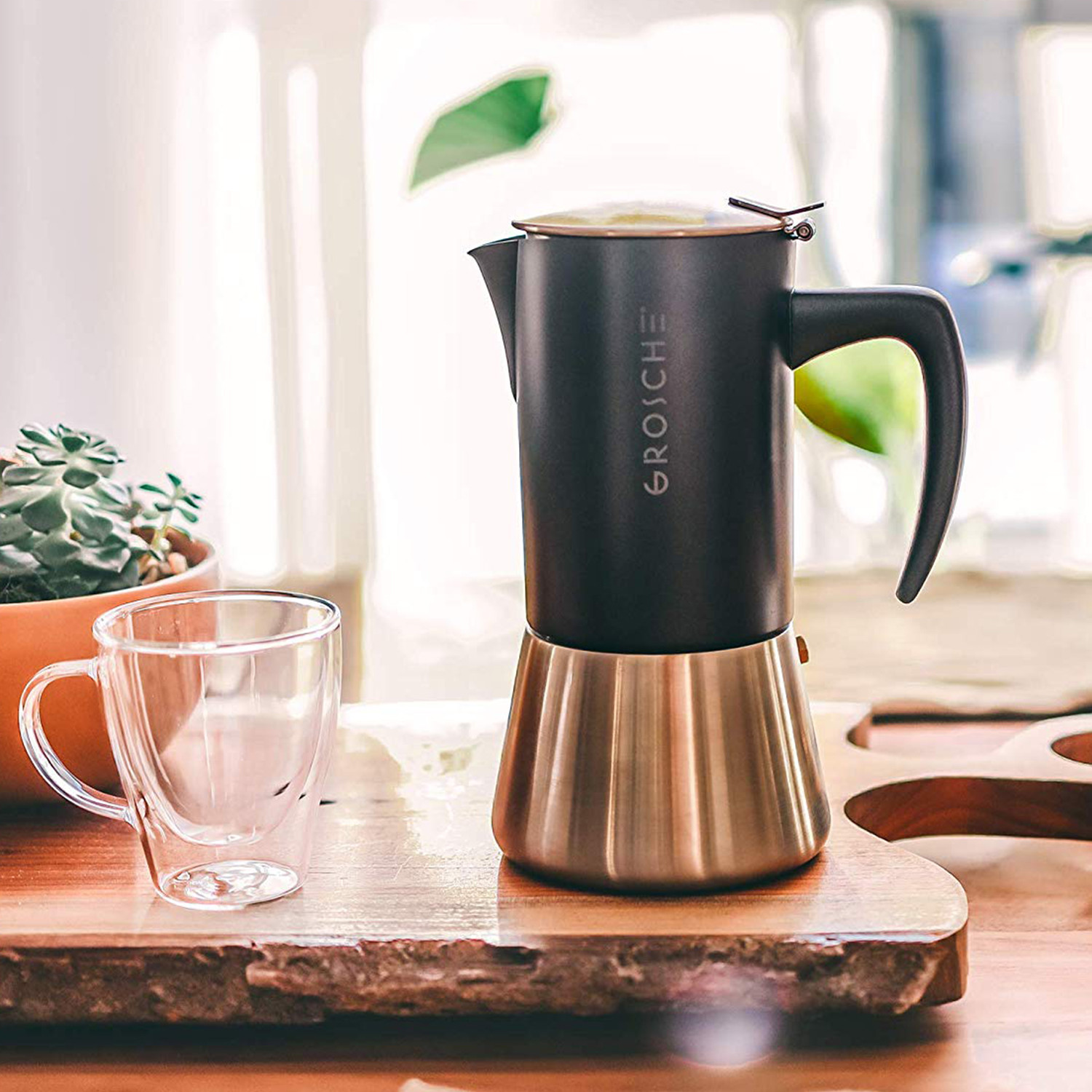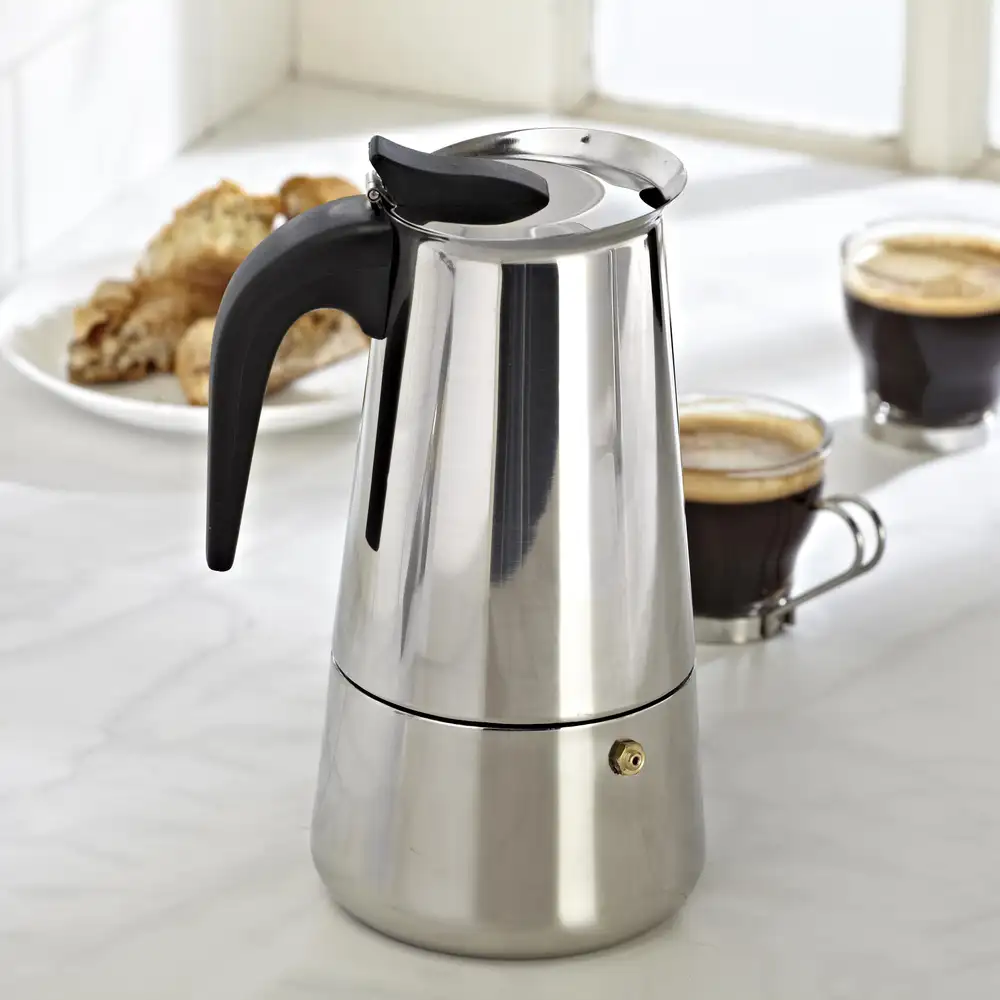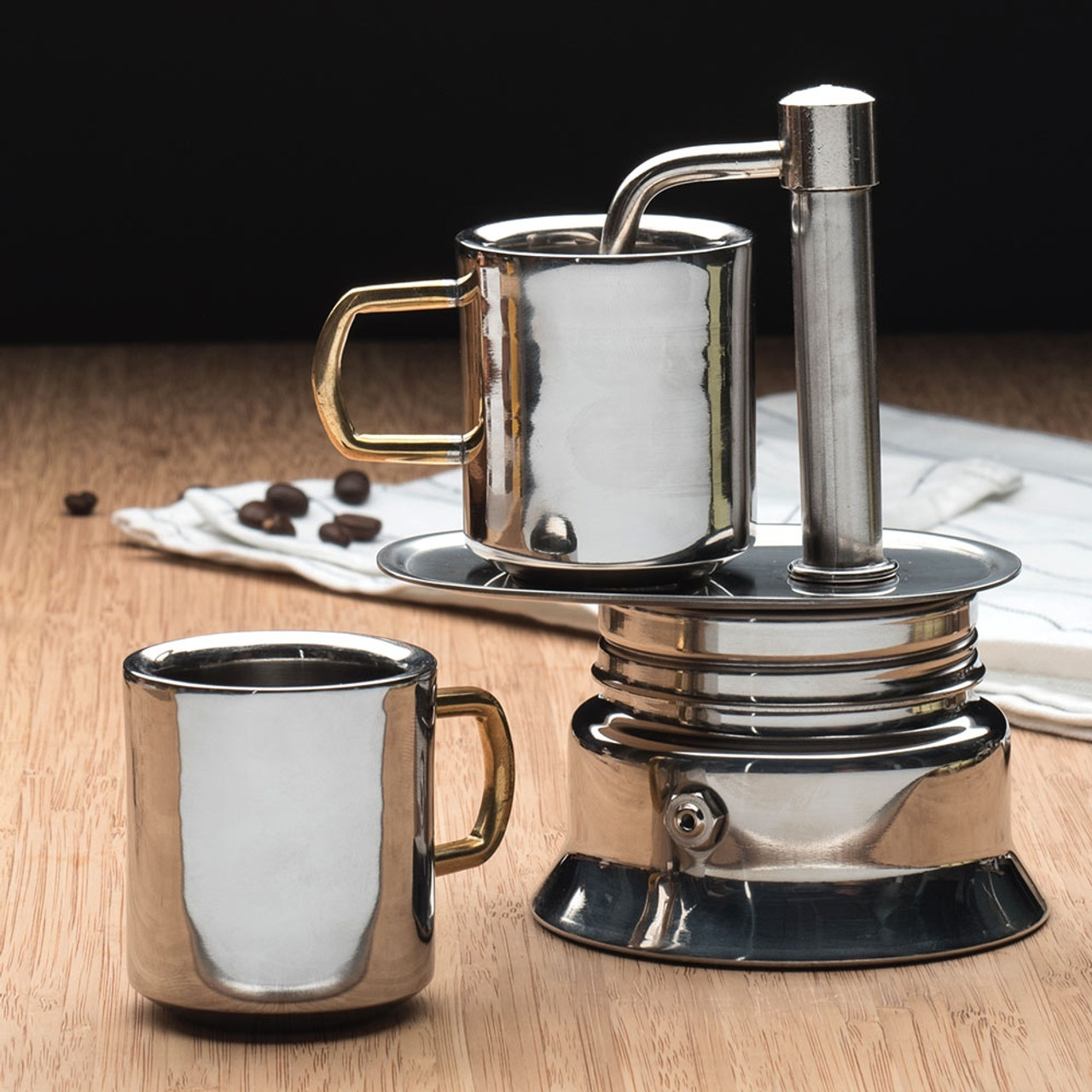Introduction: Mastering How to Use a Stovetop Espresso Maker
For coffee enthusiasts seeking a rich and robust brew without the need for an electric machine, the stovetop espresso maker, often referred to as a Moka pot, is an invaluable tool. Understanding how to use stovetop espresso makers can transform your daily coffee ritual, allowing you to craft delicious espresso-style beverages right in your kitchen. This guide delves into the intricacies of operating a stovetop espresso maker, ensuring you achieve the perfect cup every time.
Understanding Your Stovetop Espresso Maker
Before diving into the brewing process, it’s essential to familiarize yourself with the components and variations of stovetop espresso makers. This foundational knowledge will enhance your ability to use the device effectively and troubleshoot any potential issues.
Types of Stovetop Espresso Makers
Stovetop espresso makers come in various styles, each offering unique features tailored to different preferences:
- Traditional Moka Pots: These are the classic stovetop espresso makers, typically made of aluminum or stainless steel. They consist of three main parts: the bottom chamber for water, the central funnel for coffee grounds, and the top chamber where the brewed espresso collects.
- Pressure-Controlled Models: Some modern stovetop espresso makers incorporate pressure regulation features to mimic the pressure levels of commercial espresso machines more closely. These models aim to enhance the extraction process, resulting in a richer and creamier espresso.
- Single or Multi-Cup Pots: Depending on your needs, you can choose between single-cup models for personal use or larger multi-cup pots for serving multiple people.
Components of the Espresso Maker
A typical stovetop espresso maker comprises the following parts:
- Base Chamber: This section holds the water. It’s crucial to fill it only to the prescribed level to ensure optimal brewing.
- Filter Funnel: Located above the base, this funnel is where you place the finely ground coffee. It features a perforated filter to allow water to pass through while retaining the coffee grounds.
- Top Chamber: As the water boils and creates steam pressure, it forces the water through the coffee grounds and into the top chamber, resulting in brewed espresso.
- Gasket and Filter Plate: These components ensure a proper seal and prevent leaks during the brewing process.
Preparing to Use Your Espresso Maker
Proper preparation is key to mastering how to use a stovetop espresso maker effectively. This involves gathering the necessary ingredients, tools, and ensuring your equipment is clean and in good working order.
Required Ingredients and Tools
To brew the perfect espresso using a stovetop espresso maker, you’ll need:
- Fresh Coffee Beans: The quality of your coffee beans significantly impacts the final brew. Opt for freshly roasted beans for optimal flavor.
- Grinder: A burr grinder is ideal for achieving a consistent grind size, which is crucial for even extraction.
- Filtered Water: Using filtered water can enhance the taste of your espresso by removing impurities and minerals that may affect flavor.
- Stovetop Espresso Maker: Ensure your espresso maker is clean and free from any previous coffee residues.
Cleaning and Maintenance
Before your first use and after each brewing session, it’s essential to clean your espresso maker thoroughly:
- Disassemble: Carefully take apart the espresso maker, separating the base, funnel, filter, and top chamber.
- Rinse All Parts: Use warm water to rinse each component, avoiding the use of soap as it can leave residues that affect the taste of your coffee.
- Dry Completely: Allow all parts to dry completely before reassembling to prevent rust and maintain the integrity of the espresso maker.
Step-by-Step Guide on How to Use a Stovetop Espresso Maker
Mastering how to use a stovetop espresso maker involves a systematic approach. Follow these detailed steps to brew the perfect espresso:
Filling the Water Chamber
- Measure the Water: Fill the base chamber with filtered water up to the safety valve. Overfilling can cause excessive pressure and potential leaks.
- Preheat Water (Optional): For a quicker brewing process, you can preheat the water before pouring it into the base chamber, reducing the time it takes to reach boiling point.
Adding the Coffee Grounds
- Grind the Coffee: Use a burr grinder to achieve a fine, uniform grind, similar to table salt. Too coarse a grind can result in weak coffee, while too fine a grind may cause over-extraction and bitterness.
- Fill the Filter Funnel: Spoon the ground coffee into the filter funnel without pressing it down. Level the coffee surface with a clean utensil to ensure even water flow during brewing.
Assembling the Espresso Maker
- Insert the Filter Funnel: Place the filled funnel into the base chamber, ensuring a snug fit to prevent any leaks.
- Screw the Top Chamber: Carefully align the top chamber with the base and funnel, screwing it on firmly but not excessively to avoid damaging the gasket.
Heating on the Stovetop
- Place on the Stove: Position the assembled espresso maker on a stovetop burner set to medium heat. Ensure it’s stable to prevent tipping during the brewing process.
- Monitor the Brewing Process: As the water heats, pressure will build, forcing the water through the coffee grounds and into the top chamber. You’ll hear a hissing or gurgling sound as the espresso begins to emerge.
- Remove from Heat: Once you hear a distinct short burst indicating that the brewing process is nearing completion, remove the espresso maker from the heat to prevent burning the coffee.
- Serve Immediately: Pour the freshly brewed espresso into a pre-warmed cup to maintain its temperature and aroma.
Tips for Perfecting Your Espresso
Achieving the perfect stovetop espresso requires attention to several factors, from bean selection to brewing technique. Here are expert tips to elevate your espresso-making skills:
Choosing the Right Coffee Beans
- Freshness is Key: Use freshly roasted beans for the best flavor. Coffee beans begin to lose their freshness shortly after roasting, so aim to use beans within a few weeks of their roast date.
- Roast Level: Medium to dark roasts are ideal for stovetop espresso makers, as they produce a richer and more robust flavor profile.
Grind Size and Consistency
- Uniform Grind: Ensure your coffee is ground evenly to promote consistent extraction. Clumpy or uneven grounds can lead to over-extraction or under-extraction, affecting the taste.
- Adjusting Grind Size: Experiment with slightly finer or coarser grinds to find the optimal balance for your espresso maker and personal taste preferences.
Temperature Control and Brewing Time
- Consistent Heat: Maintain a steady medium heat to ensure even extraction. Rapid boiling can lead to bitter flavors, while insufficient heat may result in weak coffee.
- Brewing Duration: Aim for a brewing time of approximately 4-5 minutes. This duration allows for the proper extraction of flavors without over-extracting, which can cause bitterness.
Troubleshooting Common Issues
Even with careful preparation, you might encounter challenges while using your stovetop espresso maker. Understanding common issues and their solutions can enhance your brewing experience.
Espresso Not Brewing
- Low Heat: Ensure the burner is set to medium heat. If the heat is too low, it may prevent the water from reaching the necessary pressure to force through the coffee grounds.
- Clogged Filter: Residual coffee oils or fine grounds can clog the filter. Clean all components thoroughly to prevent blockages.
Bitter or Sour Taste
- Over-Extraction: Brewing for too long or using too fine a grind can over-extract the coffee, leading to bitterness. Adjust brewing time and grind size accordingly.
- Under-Extraction: Conversely, under-extraction due to a coarse grind or insufficient brewing time can result in a sour taste. Ensure the grind size and brewing duration are appropriate.
Leaks and Maintenance Problems
- Improper Assembly: Ensure all parts are securely and correctly assembled. A loose top chamber or damaged gasket can cause leaks during brewing.
- Wear and Tear: Regularly inspect the gasket and filter plate for signs of wear or damage. Replace components as needed to maintain a proper seal.
Cleaning and Maintaining Your Espresso Maker
Proper maintenance extends the lifespan of your stovetop espresso maker and ensures each brew is as flavorful as the last. Follow these cleaning and maintenance practices to keep your espresso maker in optimal condition.
Daily Cleaning Tips
- Disassemble After Use: After each brewing session, carefully take apart the espresso maker to clean each component thoroughly.
- Rinse with Warm Water: Use warm water to rinse all parts, removing any residual coffee grounds or oils.
- Avoid Soap: Refrain from using soap, as it can leave an unpleasant residue that affects the taste of your coffee.
Descaling the Espresso Maker
Over time, mineral deposits from water can accumulate inside your espresso maker, impacting performance and flavor. Regular descaling is essential:
- Prepare a Descaling Solution: Mix equal parts of water and white vinegar or use a commercial descaling agent.
- Run a Brewing Cycle: Fill the base with the descaling solution and brew without coffee grounds, allowing the solution to cycle through the espresso maker.
- Rinse Thoroughly: After descaling, run several brewing cycles with fresh water to eliminate any residual vinegar or descaling agent.
Storing Your Espresso Maker
Proper storage prevents damage and maintains hygiene:
- Completely Dry: Ensure all parts are entirely dry before reassembling or storing to prevent mold and rust.
- Disassemble if Possible: If your espresso maker disassembles into separate parts, consider storing them separately to facilitate thorough drying and cleaning.
- Protect from Moisture: Store your espresso maker in a dry environment, away from direct sunlight and humidity.
Advanced Techniques for Espresso Enthusiasts
For those looking to delve deeper into the art of espresso making, advanced techniques can refine your skills and further enhance the quality of your brew.
Pre-Infusion
Pre-infusion involves saturating the coffee grounds with water before full brewing begins. This technique allows the grounds to bloom, promoting even extraction and richer flavors:
- Partial Brewing: Start the brewing process and remove the espresso maker from heat just as the water begins to bubble.
- Let it Sit: Allow the grounds to saturate and bloom for about 30 seconds.
- Resume Heating: Return the espresso maker to the heat to complete the brewing process.
Pressure Management
While stovetop espresso makers operate under less pressure than traditional espresso machines, managing heat and pressure can still impact the final brew:
- Controlled Heating: Gradually increase the heat to allow for a smoother buildup of pressure, resulting in a more balanced extraction.
- Avoid Excessive Pressure: Prevent overheating, as excessive pressure can lead to over-extraction and bitter flavors.
Temperature Precision
Maintaining a consistent temperature is crucial for achieving optimal extraction:
- Use a Thermometer: For precision, use a stovetop thermometer to monitor the brewing temperature.
- Adjust Burner Settings: Fine-tune your stove’s burner settings to maintain a stable temperature throughout the brewing process.
 Conclusion: Perfecting How to Use a Stovetop Espresso Maker
Conclusion: Perfecting How to Use a Stovetop Espresso Maker
Mastering how to use a stovetop espresso maker opens the door to a world of rich and flavorful coffee experiences. By understanding the components, choosing the right model, and following meticulous brewing techniques, you can consistently produce high-quality espresso in your own kitchen. Whether you’re a seasoned barista or a casual coffee lover, the stovetop espresso maker offers a satisfying and sustainable way to enjoy your favorite beverage. Embrace the art of stovetop brewing and elevate your coffee ritual to new heights.




